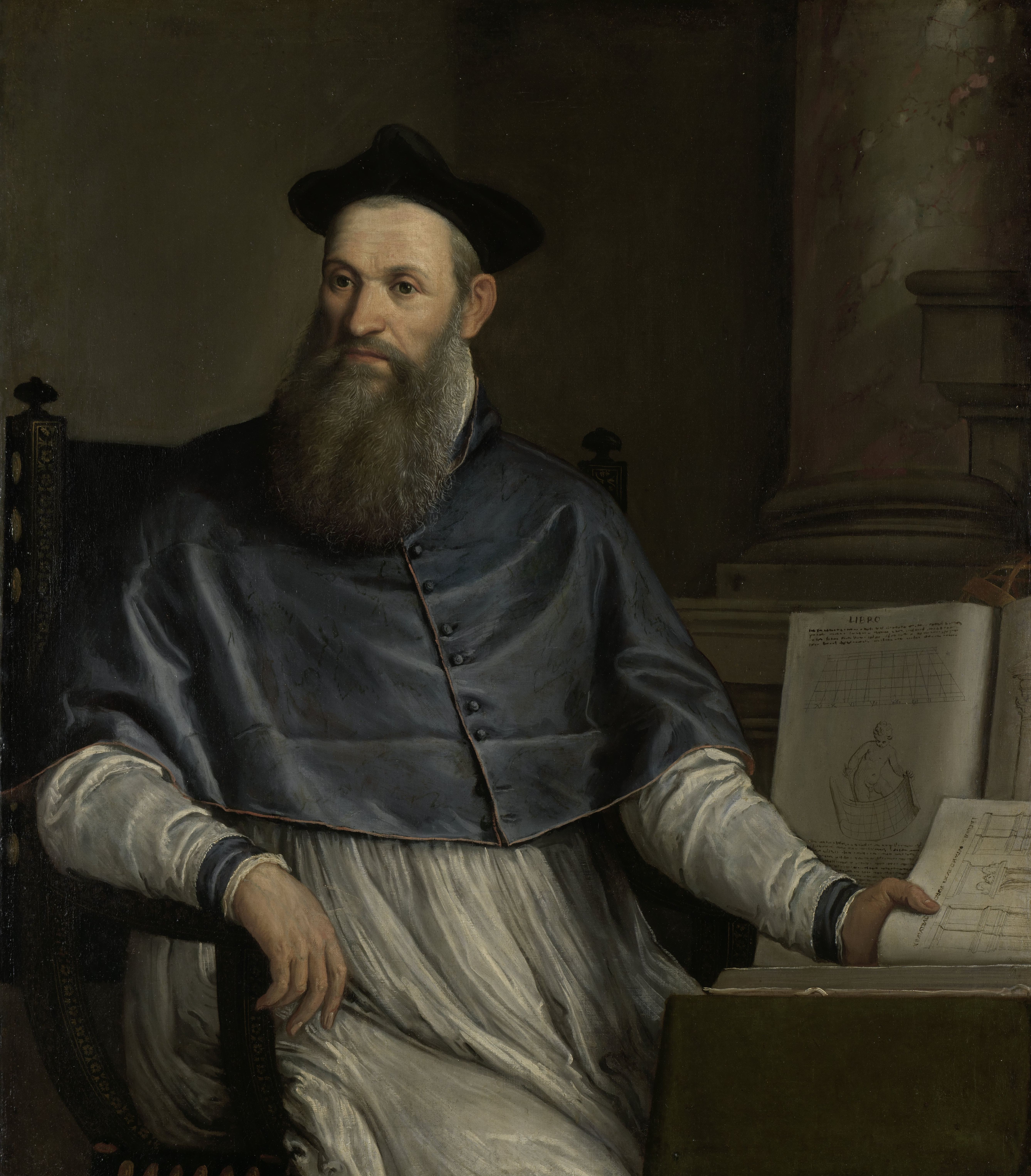by Heather R. Darsie
In an unassuming hallway leading visitors to the Doge’s Palace in Venice, Italy from the Staircase of Giants and out through the Porta della Carta, there is an extraordinary feature adorning the ceiling not once, but twice: a Tudor rose. Or so it appears.

Via Wikimedia Commons.
Daniele Barbaro was a Venetian Cardinal, who was born in 1514 and passed away in 1570. During his lifetime, Barbaro translated the works of Vetruvius, a Roman architect, and was known to be a patron of architects. Particularly, he patronized the Venetian architect known as Andrea Palladio. Barbaro, a bit of a linguist, also served as ambassador to the court of Elizabeth I of England. He may also have served as ambassador to Edward VI. Pleased with his service, Elizabeth allowed Barbaro in 1560 to quarter his personal arms with Tudor roses.
Daniele’s brother, Marcantonio, was born in 1518 and outlived his brother by several years, dying in 1595. A diplomat, he served as ambassador to France from 1561 to 1564. Marcantonio was nominated for the position of Doge in 1570, 1578, 1585 and 1595. Marcantonio, educated at the University of Padua, became Rector during his final years and served the university at the same time as Galileo Galilei was a professor.
In 1577, a fire devastated the Doge’s Palace. Palladio was approached to perform restoration work and new construction. Already Palladio had been the architect for several palaces and churches in Venice, and had a good reputation. Palladio designed apartments on the first floor (second floor, to Americans). But did he work on that hallway by the Porta della Carta? Is the relief that appears to be a Tudor rose a nod to the Barbaro brothers, who were influential in Venice and supported Palladio’s career, or is it mere coincidence? The answer is not easily found, though the evidence is compelling.
You Might Also Like
- The Iberian House of Trastamara
- Thomas Tallis, Tudor Composer
- Martin Luther’s Influence on the German Language
Sources and Suggested Reading
- Haynes, Alan. “Daniele Barbaro: a Venetian Patron.” History Today, Vol. 25, Issue 12. December 1975.
- Cumming, Robert, ed. My Dear B.B.: the Letters of Bernard Bereson and Kenneth Clark, 1925-1959. United Kingdom: TJ International (2015).
- Radcliffe Rogers, Barbara. “Exploring the Doge’s Palace in Venice: a Visitor’s Guide.” http://www.planetware.com/venice/doges-palace-i-vn-vd.htm Retrieved 1 March 2016.
- Grendler, Paul F. Renaissance Education between Religion and Politics. Aldershot: Ashgate (2006).
- Suriano, Michele; Layard, Sir Austen Henry; Barbaro, Marc Antonio. Despatches of Michele Suriano and Marc’ Antonio Barbaro, Venetian Ambassadors at the Court of France, 1560-1563. Published 1891.
- The author recently went on a trip to Venice, where she saw the alleged Tudor rose. This shows the importance of taking in every detail and the significance of symbolism during the Renaissance.

That is so interesting, because we always hear about the Venetian ambassador’s story of Henry VIII, I never thought of a reverse situation.
LikeLike
Thank you for your comment! I think so, too. The Barbaro brothers had phenomenal careers in both England and France.
LikeLiked by 1 person